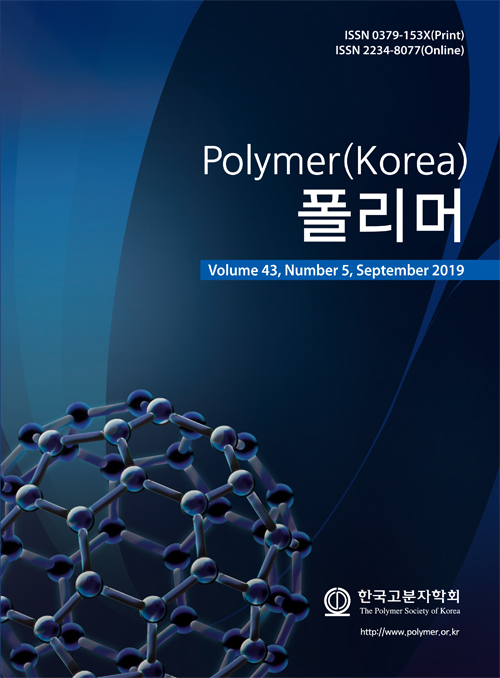- Effects of Thermal Treatment on Electrical Conductivity and Hardness of Polyaniline-Silica Composites
Young Been Lee, Sung Kyu Jang, Chung Hyoi Park, and Felix Sunjoo Kim†

School of Chemical Engineering and Materials Science, Chung-Ang University, Seoul 06974, Korea
- 폴리아닐린-실리카 복합체의 전기전도도와 경도에 대한 열처리 효과
중앙대학교 화학신소재공학부
Physical stability of conducting polymers is considerably important for their applications in electronics. Here, we studied the thermal annealing effects of conducting polyaniline (PANI) composites with a sol-gel silica on their mechanical and electrical properties. Films were prepared onto a substrate by simple drop-casting method using solutions including aniline, tetraethyl orthosilicate (TEOS), and ammonium persulfate. Spectroscopic analyses confirm the emeraldine-salt phase of PANI and the presence of silica network in the film. Nanoindentation measurement showed that, although the improvement was observed in the PANI/TEOS hybrid films, the annealing temperature was not a significant factor for the hardness. The electrical conductivity of the composite decreased from 5.5 to 1.9 S/cm after annealing, due to the slight dedoping of PANI by heat-induced removal of the HCl dopant.
전도성 고분자의 물리적 특성은 전자소자 응용에 큰 영향을 끼친다. 본 고에서는 열처리에 의한 폴리아닐린과 실리카 복합체의 기계적 특성과 전기전도도의 영향에 대해 분석하였다. 아닐린과 실리카 전구체의 혼합 수용액과 산화제 수용액을 순차적으로 떨어뜨려 전도성 복합체 박막을 만들고 열처리를 진행하였다. 분광분석 결과를 통해 에메랄딘염 상태의 폴리아닐린과 실리카 네트워크가 형성되었음을 확인하였다. 또한 나노인덴테이션을 통해 복합체의 경도가 순수 폴리아닐린보다 높은 것을 확인했으나, 열처리 온도에 큰 영향을 받지 않았다. 전기전도도는 5.5 S/cm에서 1.9 S/cm로 감소하는 경향을 확인했는데, 이는 열처리에 의한 디도핑의 결과로 분석된다.
Keywords: polyaniline, tetraethyl orthosilicate, conducting polymer, composite, heat treatment
- Polymer(Korea) 폴리머
- Frequency : Bimonthly(odd)
ISSN 0379-153X(Print)
ISSN 2234-8077(Online)
Abbr. Polym. Korea - 2023 Impact Factor : 0.4
- Indexed in SCIE
 This Article
This Article
-
2019; 43(5): 661-664
Published online Sep 25, 2019
- 10.7317/pk.2019.43.5.661
- Received on Jun 14, 2019
- Revised on Jul 18, 2019
- Accepted on Jul 18, 2019
 Correspondence to
Correspondence to
- Felix Sunjoo Kim
-
School of Chemical Engineering and Materials Science, Chung-Ang University, Seoul 06974, Korea
- E-mail: fskim@cau.ac.kr









 Copyright(c) The Polymer Society of Korea. All right reserved.
Copyright(c) The Polymer Society of Korea. All right reserved.